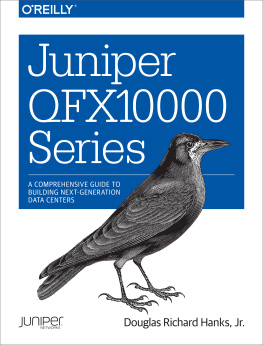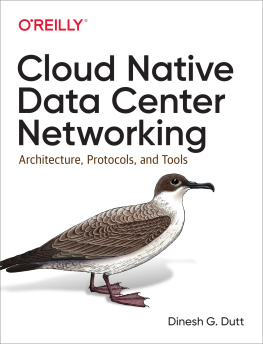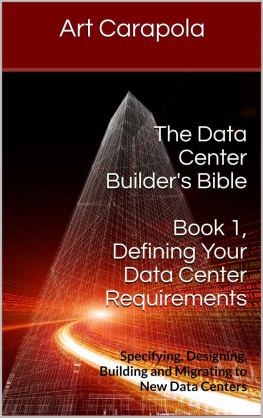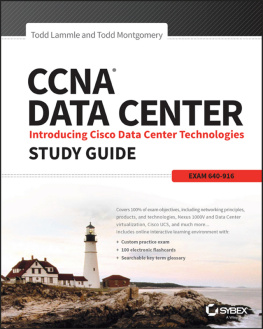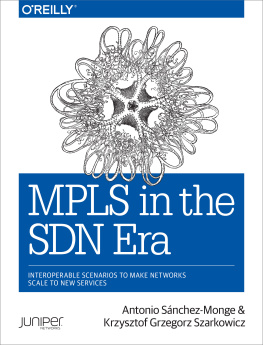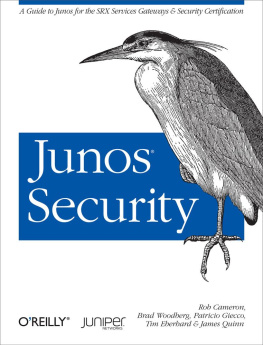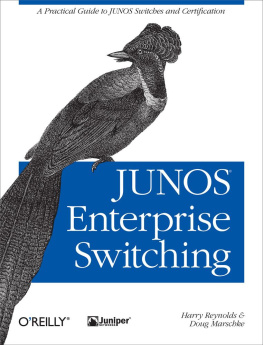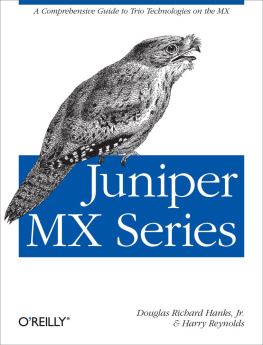Praise for Juniper QFX10000 Series
Juniper QFX10000 balances functionality and expense in a unique proposition not found in merchant silicon.
Joel Jaeggli, operations and management area director, IETF
With a fundamental shift in the delivery and consumption of network functions, the QFX10000 provides flexible configurations for any modern data center.
Anthony Burke, Architect, VMware
This book is an invaluable resource useful for any network engineer looking to understand the finer details of the Juniper QFX10000, which is immensely helpful to our work at Twitter.
Tim Hoffman, lead backbone engineer, Twitter
Gain valuable insights on architecting data center networks, which are backed by concrete examples.
Brian Tam, network lead, Uber
This is simply one of the best guides on modern datacenter architecture, presented in a pragmatic and understandable way.
Sargun Dhillon, senior lead, Mesosphere
The Juniper QFX10000 has new silicon plus a new memory architecture that eliminates bottlenecks . Want to make the most of what Juniper has created? You need this book.
Ethan Banks, cofounder, Packet Pushers
Juniper QFX10000 Series
by Douglas Richard Hanks, Jr.
Copyright 2016 Douglas Richard Hanks, Jr. All rights reserved.
Printed in the United States of America.
Published by OReilly Media, Inc. , 1005 Gravenstein Highway North, Sebastopol, CA 95472.
OReilly books may be purchased for educational, business, or sales promotional use. Online editions are also available for most titles (http://safaribooksonline.com). For more information, contact our corporate/institutional sales department: 800-998-9938 or corporate@oreilly.com .
- Editors: Brian Anderson and Courtney Allen
- Production Editor: Melanie Yarbrough
- Copyeditor: Octal Publishing Inc.
- Proofreader: Jasmine Kwityn
- Indexer: Wendy Catalano
- Interior Designer: David Futato
- Cover Designer: Randy Comer
- Illustrator: Douglas Richard Hanks, Jr.
- August 2016: First Edition
Revision History for the First Edition
- 2016-07-25: First Release
See http://oreilly.com/catalog/errata.csp?isbn=9781491922255 for release details.
The OReilly logo is a registered trademark of OReilly Media, Inc. Juniper QFX10000 Series, the cover image, and related trade dress are trademarks of OReilly Media, Inc.
While the publisher and the author have used good faith efforts to ensure that the information and instructions contained in this work are accurate, the publisher and the author disclaim all responsibility for errors or omissions, including without limitation responsibility for damages resulting from the use of or reliance on this work. Use of the information and instructions contained in this work is at your own risk. If any code samples or other technology this work contains or describes is subject to open source licenses or the intellectual property rights of others, it is your responsibility to ensure that your use thereof complies with such licenses and/or rights.
978-1-491-92225-5
[LSI]
This book is dedicated to the awesome teams at Juniper Networks that made the Juniper QFX10000 possible. Ive learned and grown so much in my career by being part of the JDI team tasked with bringing these new switches to market. Its been challenging both from a technical and business point of view. Its such an honor to be part of the team creating and inventing the latest technology.
Thank you,
Doug
Preface
This new book is a little shorter than my previous books on the Juniper MX and Juniper QFX5100. Thats because I want to focus on whats new instead of just writing about the same things in a different way. This book will focus mainly on a few key new technologies: hardware and software architecture of the Juniper QFX510000 and Ethernet VPN (EVPN).
For a while, Juniper had a product gap in its switching portfolio: a high-density, feature-rich data center switch. The Juniper QFX10000 family of switches fills this gap in spades. It has been the most anticipated switch in the companys history. Juniper spared no expense when designing this new device. As of this writing, it comes packed to the brim with features, including full Multiprotocol Label Switching (MPLS), insane logical scale, and the most 40GbE and 100GbE ports.
The Juniper QFX10000 switch was designed from the ground up to solve some serious problems. Obviously its a spine switch, but youre also able to use it in many different use cases across several different verticals. Here are some examples:
Service provider
Internet exchange
Public/private cloud
Enterprise
Junos Fusion aggregate device
Standard Ethernet/IP spine switch
Collapsed spine switch and edge router
The Juniper QFX10000 also takes virtualization to heart: under the hood, it uses Linux and KVM to virtualize the network operating system (Junos) to reap all the benefits of virtualization, such as snapshots and In-Service Software Upgrades (ISSU).
This book is going to show you, step by step, how to build a better network by using the Juniper QFX10000 Seriesits such a versatile platform that you can place it in the fabric, spine, or edge of any type of network and provide instant value. The Juniper QFX10000 was designed to be a network virtualization beast. You can choose between six different networking technologies and support overlay networking directly in hardware with no performance loss.
No Apologies
Im an avid reader of technology books, and I always get a bit giddy when a new book is released because I cant wait to read it and learn more about a specific technology. However, one trend I have noticed is that every networking book tends to regurgitate the basics over and over. There are only so many times you can force yourself to read about spanning tree, the split-horizon rule, or OSPF LSA types. One of the goals of this book is to introduce new and fresh content that hasnt been published before.
I made a conscious decision to keep the technical quality of this book very high; this created a constant debate as to whether to include primer or introductory material in the book to help refresh a readers memory with certain technologies and networking features. In short, heres what I decided:
Spanning tree and switchingSpanning tree and switching is covered in great detail in every JNCIA and CCNA book on the market. If you want to learn more about spanning tree or switching, check out
Junos Enterprise Switching (OReilly, 2009), or
CCNA ICND2 Official Exam Certification Guide, Second Edition (Cisco Press, 2007).Routing protocolsThere are various routing protocols such as OSPF and IS-IS used throughout this book in case studies. No introductory chapters are included for IS-IS or OSPF, and its assumed that you are already familiar with these protocols. If not, you can learn more by checking out
Junos Enterprise Routing, Second Edition (OReilly, 2011) or
Juniper Networks Certified Internet Expert Study Guide by Juniper Networks.Multichassis Link Aggregation (MC-LAG)Ah, MC-LAG, we meet again. If you want to learn more about MC-LAG, read
Juniper QFX5100 (OReilly, 2014) or
Juniper MX Series, Second Edition (OReilly, 2016).Quality of ServiceClassifiers, schedulers, and drop profiles. Oh my! Read

